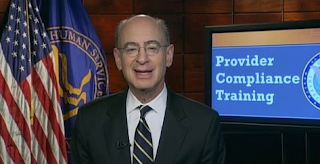The U.S. Department of Health and Human Services (HHS) Office for Civil Rights (OCR) announced that it has a new video training module for health care providers.
According to HHS, the new training module provides an “in-depth review of the components of the HIPAA right of access and ways in which it enables individuals to be more involved in their own care.” The training module provides helpful suggestions about how health care providers can integrate aspects of the HIPAA access right into medical practice. This activity is intended for primary care physicians, obstetricians and gynecologists, pediatricians, and nurses.
The goal of this activity is to review components of the Health Insurance Portability and Accountability Act (HIPAA) right of access and ways in which it enables individuals to be more involved in their own care.
Upon completion of this activity, participants will have increased knowledge regarding:
The goal of this activity is to review components of the Health Insurance Portability and Accountability Act (HIPAA) right of access and ways in which it enables individuals to be more involved in their own care.
Upon completion of this activity, participants will have increased knowledge regarding:
- The components of the HIPAA access right, including an individual's ability to direct a copy of their health information to a third party, including a researcher
- How the HIPAA right of access enables individuals to become more involved in their care
Information about training materials can be found on the HHS website here: https://www.hhs.gov/hipaa/for-professionals/training/index.html.
The video module can be found here: http://www.medscape.org/viewarticle/876110.
The module contains a video (approximately 37 minutes) titled “An Individuals’ Right to Access and Obtain Their Health Information Under HIPAA” and features Devan McGraw, the Deputy Director for Health Information Privacy at the US Department of Health and Humans Services. The video talks about why privacy protections are important, but mainly focuses on the patient’s right of access, including:
- what fees that can be charged
- whether records may be sent unsecured at the patient’s request
- how quickly the records need to be provided to the patient upon request
- which records can be excluded from a patient’s right to access
- an individual’s ability to have a copy of his/her health information sent directly to a third party.

Upon completion of this activity, participants will receive free Continuing Medical Education (CME) credit for physicians and Continuing Education (CE) credit for health care professionals. In order to receive credit, it is required to have a Medscape user ID and password, which is free to sign up. There are no fees for participating in or receiving credit for this CME.
Additional Training Materials and Resources
Helping Entities Implement Privacy and Security Protections
The HIPAA Rules are flexible and scalable to accommodate the enormous range in types and sizes of entities that must comply with them. This means that there is no single standardized program that could appropriately train employees of all entities.
HealthIT.gov’s Guide to Privacy and Security of Electronic Health Information provides a beginners overview of what the HIPAA Rules require, and the page has links to security training games, risk assessment tools, and other aids.
Patient Privacy: A Guide for Providers (login required), is an educational program for health care providers on compliance with various aspects of the HIPAA Privacy and Security Rules. Physicians can earn free Continuing Medical Education (CME) credits and health care professionals will receive Continuing Education (CE) credits.
State Attorneys General Training materials provide a more comprehensive overview of HIPAA compliance:
Patient Privacy: A Guide for Providers (login required), is an educational program for health care providers on compliance with various aspects of the HIPAA Privacy and Security Rules. Physicians can earn free Continuing Medical Education (CME) credits and health care professionals will receive Continuing Education (CE) credits.
State Attorneys General Training materials provide a more comprehensive overview of HIPAA compliance:
Video & Slides from 2011 State Attorneys General Training (link to non-government website)
Computer-Based State Attorneys General Training Modules (download zip file)
Want to learn more about the HIPAA Privacy & Security Rules? Sign Up for the OCR Privacy & Security Listserv
OCR has established two listservs to inform the public about health information privacy and security FAQs, guidance, and technical assistance materials. We encourage you to sign up and stay informed!
For additional information about HIPAA Privacy and HIPAA Security training for your self and your staff, please contact Healthcare Compliance Solutions Inc. (HCSI). (801)-947-0183







